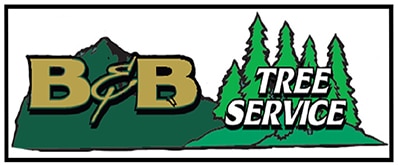Which Trees Survive in the Winter?
If you happen to live in western North Carolina, perhaps as far west as Asheville or Boone, you are in one of the ‘hardiness zones’ of the US where the most extreme temperature can get as low as -10 degrees Fahrenheit. This of course, puts a strain on any plant trying to survive the winter, even in a dormant or semi-dormant state. However, there are a number of trees that do just fine, even when the mercury drops to its lowest point, and low temperatures threaten all plant life. Here are some of the best trees to plant in western North Carolina, detailed in three different categories.
Privacy trees
Your neighborhood might be one of those where houses are packed in fairly close together, and you’d like a little bit of privacy in your own back yard. There are some great trees which will do the trick for you, and provide all the privacy you need from the prying eyes of your neighbors. The Green Giant Arborvitae is a terrific choice, which will grow tall and wide, and which also has a strong root system so it can flourish even through the harsh winters of western North Carolina.
While some viburnum shrubs are deciduous, others are evergreens and will not lose their leaves during winter. These are excellent for establishing a privacy screen, and they will resist even very harsh weather during winter time. Chindo Viburnum will grow to about 15 ft and will spread about seven ft wide. They are also fast-growing, and tolerant of drought conditions as well. Nellie Stevens Holly is a popular choice among North Carolinians, since it provides a very tall privacy screen, and has glossy green evergreen leaves, often accompanied by orange-red berries.
Shade trees
You might not need a shade tree in winter time so much as in the warmth of summer, but if you can plant trees which accomplish both objectives, you’ll have all the seasons covered. One of the best shade trees you can plant in this region is the white oak, assuming you have the room to accommodate a full-grown white oak. These trees can grow to over 100 ft tall if left unchecked, and have been known to survive for more than 300 years. Shagbark Hickory trees on the other hand, will top out between 60 and 80 ft tall, and they also bear hickory nuts, which are favored by many connoisseurs of nuts.
Sourwood trees reach the zenith of their beauty in the autumn, at which time they burst into crimson red, to dazzle even casual observers. If you like tree blossoms, you’ll appreciate the delicate white blossoms which emerge during summer on the Sourwood tree. This tree will grow to between 60 and 80 ft in height, and provide all kinds of shade for you and members of your household, while also offering great aesthetic appeal.
Flowering trees
One of the aspects of flowering trees which makes them really special is the fact that the blossoms never last for very long – so you have to really enjoy them in season. One great example of a North Carolina flowering tree is the Lipan Crape Myrtle, which has a lavender bloom and an orange-red color during autumn. For those of you who love pink, you’ll undoubtedly like the Redbud tree, which sprouts enchanting pink blossoms in spring time, and has several variations which have been developed specifically for growth in North Carolina.
Not only is flowering dogwood the favorite of a great many gardeners, it’s actually the state tree of North Carolina. Birds also love it, and it can be planted in shady areas as well as sun-drenched locations, because there are a number of different dogwoods which are each suited to specific environments. North Carolina is home to the oldest varieties of flowering dogwood trees in existence, so these trees can certainly tolerate the winters in the state.

